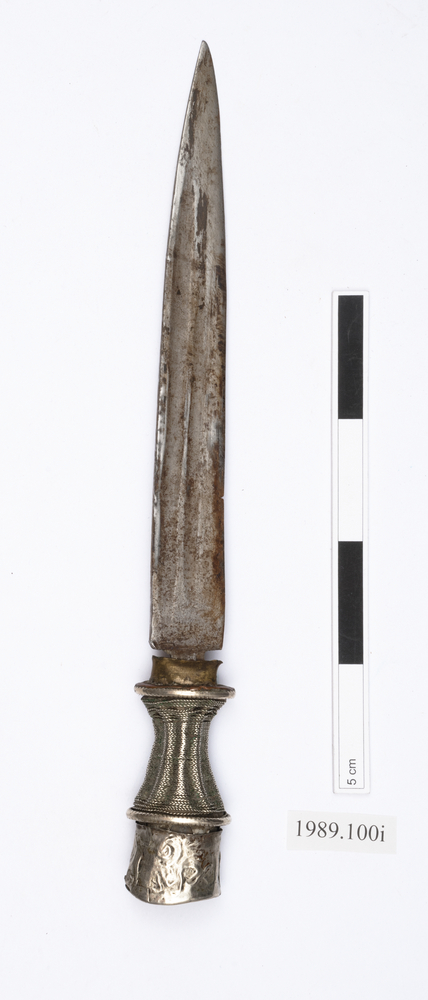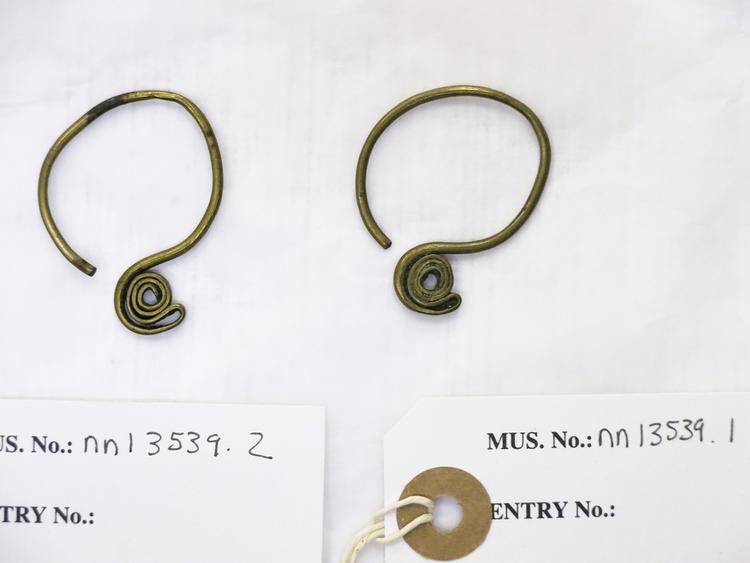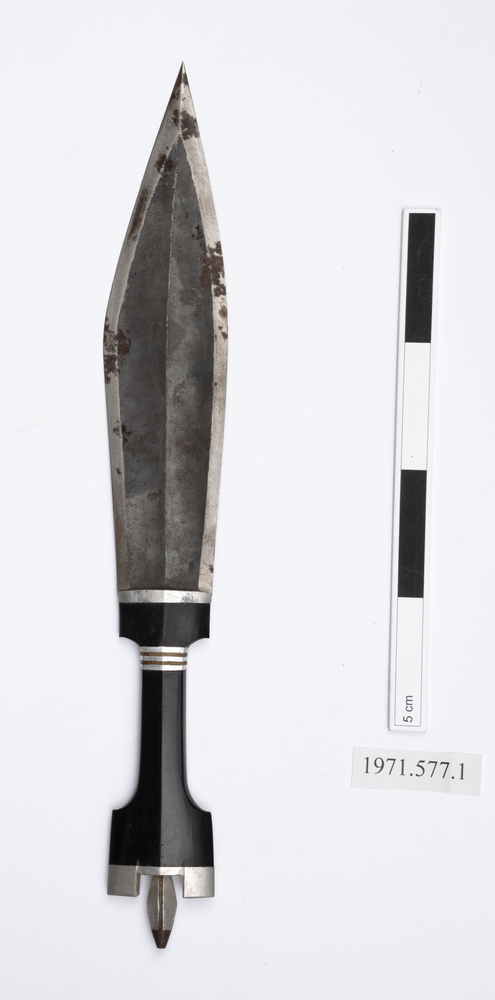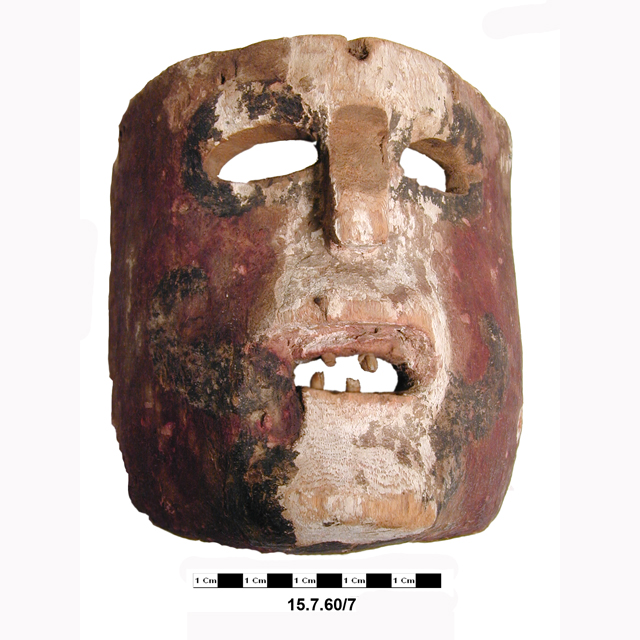
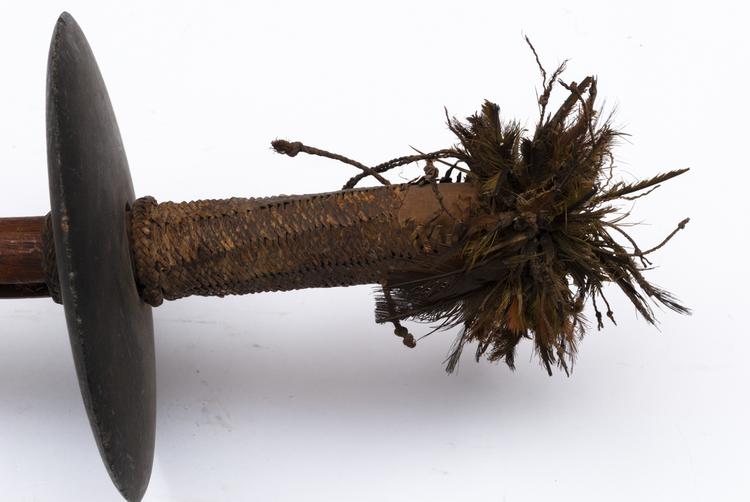
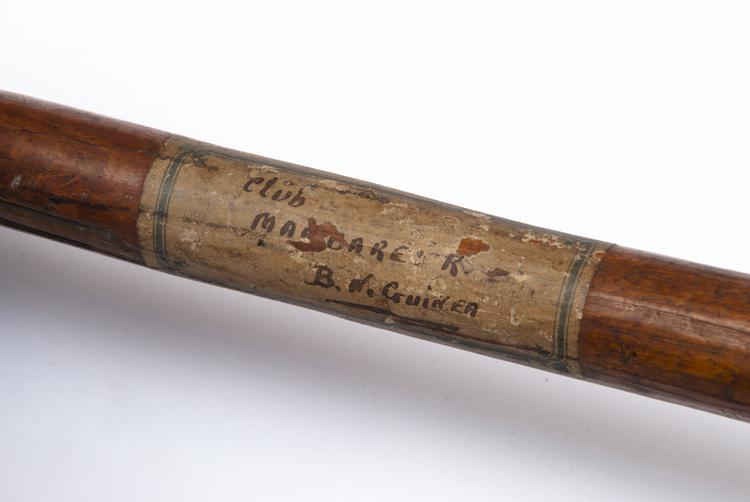
Composite club, with discoidal stone head on a wooden shaft, fixed in position with a woven hood and collar of vegetable fibre. The top of the club is ornamented with an elaborate plume of red, black and bi-colour parrot feathers.
War-Club With Stone Disk Head, Papuan Gulf, Papua New Guinea War clubs such as this were used throughout southern Papua New Guinea until the early 20th Century. For many of the people living in the forested wetlands between the many large rivers of the Papuan Gulf, stone of any kind was an exotic import, and these discus-like club heads of fine-grained greenstone were an important commodity that circulated in this region. A complex trade network existed linking the peoples of the Papuan Gulf river deltas: on one hand, with the peoples upriver in the interior, and on the other hand, with the Motu people living further to the east along New Guinea’s the south coast, who were vigorous and far-ranging traders. Across the sea to the south lay the people of the Torres Strait Islands, between the Papuan Gulf and the far north of Queensland, Australia. It has been known for a long time that many Papuan Gulf creations ended up in the Torres Straits, but it wasn’t always clear what the Torres Strait Islanders were supplying the Gulf people in return for their finely carved arrows, drums and so on. Geologists have traced these stone club heads to quarries in the Torres Strait, and we now know that the Torres Strait Islanders manufactured a surplus of them to trade with the Gulf peoples. This example preserves both the woven binding of split cane that secures the imported head to its split and wedged wooden haft, as well as a fine plume of red feathers (probably from the female Eclectus roratus parrot). Greenstone, hardwood, vegetable fibre, feather. Late 19th Century. Provenance unknown.
fighting



